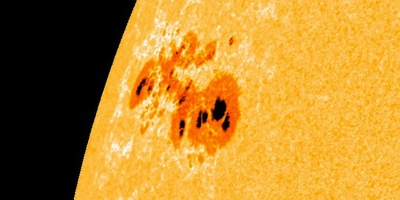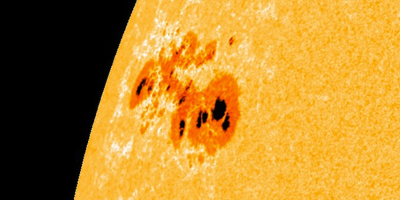Solar Down Time
Our Sun takes a break every half-millennium or so from its usual cycle of sunspot activity. These so-called “grand minima” may influence the Earth’s climate, as evidenced by a cold spell during the Maunder minimum (1645-1715). Scientists would therefore like to know more about the physics underlying these sunspot variations. A new theoretical analysis assumes that grand minima originate from fluctuations of the Sun’s magnetic field and circulation in its outer layers. The model, reported in Physical Review Letters, correctly matches the estimated occurrence of minima in the past.
A sunspot is a temporary dark region on the Sun’s surface, which results from a concentration of magnetic flux. Astronomical observations show that a drop in sunspot numbers comes with a decrease in solar brightness and solar flare counts. Typically, the number of sunspots falls and rises in an -year cycle, but sometimes sunspots disappear for several decades at a time. Studies of atmospheric isotopes estimate that our Sun experienced grand minima in the last years.
Previous work suggested that a grand minimum may be triggered by weakening in the Sun’s magnetic field and circulation. To study this further, Arnab Choudhuri and Bidya Karak of the Indian Institute of Science in Bangalore, India, started with a solar dynamo model that reproduces much of sunspot behavior. They then introduced observationally-inspired random fluctuations in both the amplitude of the polar magnetic field and the speed of meridional flows in the Sun’s outer layers. The model was consistent with data, predicting to grand minima over years. – Michael Schirber





